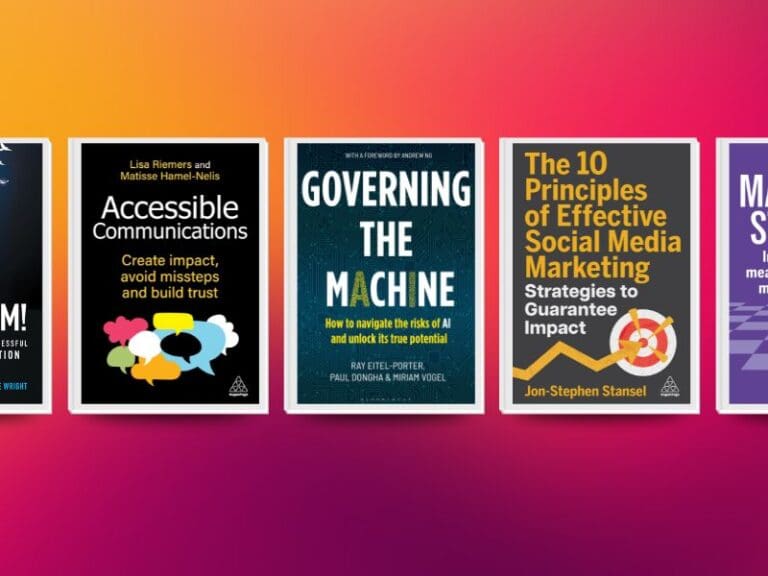Anaïs Ghelfi is Data Platform Director at Malt, Europe’s leading freelancer marketplace.
With over 10 years of experience in tech, gained in major retail groups as Pernod Ricard and Sephora, she oversees data engineering, analytics engineering, ML Operations, and AI for internal efficiency across the organisation.
 Since 2022, businesses have been competing to quickly integrate Generative AI into workflows.
Since 2022, businesses have been competing to quickly integrate Generative AI into workflows.
However, the reality is that 95% of custom-developed projects fail before reaching production, according to MIT. Not due to technological immaturity, but because organisations lack the necessary skills and projects adopt an overly generalist approach rather than vertical deployment targeted at the specific needs of each industry and function. The speed of AI’s transformation has not provided enough time for organisations and talent to keep up, resulting in skill gaps expanding and businesses struggling to use AI strategically.
This challenge, however, opens a positive perspective: freelancers, with their agility and diverse experience, offer organisations the opportunity to accelerate and transform their ambitions into concrete successes. For those looking to break into tech and AI spaces, this presents a perfect opportunity to position themselves as ideal candidates for critical roles before supply meets demand.
Where demand is growing
The strongest signal from 2024 is the sheer scale of AI adoption. Project demand for AI grew by more than 230% in a single year, making it the fastest-growing area of technology investment. Indeed, organisations are now embedding AI into their product, platforms and everyday workflows.
The industry saw some key changes:
- The high demand for Large Language Models (LLMs) and Retrieval-Augmented Generation (RAG). Companies are keen to build their own AI conversational assistants or embed AI in their company workflows and are also considering open-source LLM options such as Mistral showing an eightfold increase in demand.
- The renaissance of low-code and no-code platforms. Demand rose by 40% as organisations sought tools like Power Apps, n8n and Make to empower non-technical teams to deploy AI into workflows without relying solely on engineering resources.
- Security-related projects grew by 35%, highlighting the need for compliance, auditability and risk management as AI systems handle sensitive data.
- Demand for cloud engineers and data engineers specialists continues to outpace supply. AI projects cannot succeed without scalable and secure infrastructure, robust pipelines and governance frameworks.
Beyond technical depth: adaptability as a superpower
Employers are not only seeking deep technical knowledge. Increasingly, they value professionals who can move fluidly between domains. The ability to connect dots between AI, security, cloud, data and governance is becoming as important as mastery of any single technology.
For example, data executives who can steer architecture, engineers who understand compliance, or cybersecurity experts fluent in cloud deployment are especially attractive. This capacity to adapt is shaping hiring decisions as much as specific certifications.
Just as some areas accelerate, others plateau. Early interest in basic chatbot development or computer vision has slowed, with organisations moving away from generic experimentation towards vertical solutions that are embedded, governed and scalable. This shift toward vertical solutions represents the most effective path to delivering meaningful impact to organisations, as these targeted approaches address specific industry pain-points with measurable outcomes rather than pursuing generic capabilities without clear use cases.
The widening skills gap
The challenge lies in the fact that 40% of the most in-demand skills do not match the skills currently available in the talent pool. Employers are doubling down on foundations such as cloud security and data architecture, while many professionals are sprinting ahead into AI-first expertise such as LLMs, RAG and GenAI techniques. This mismatch creates both risk and opportunity. Organisations may find it difficult to recruit for the capabilities they need right now, but professionals who align their learning to employer demand can stand out quickly.
Interestingly, freelancers and independent specialists are often the first to spot and act on these gaps. Exposure to multiple projects allows them to adopt new tools ahead of corporate environments, giving them a head start in emerging areas. For businesses, tapping into this flexible talent pool has become a way forward to bridge the skills gap, with the demand for freelancers in tech and data rising by 70% between 2022 and 2024. This is largely due to the flexibility they provide without the need to sign long-term contracts.
Additionally, many freelancers are exposed to a wider range of projects and technologies, and this mobility gives them concrete insights into which AI initiatives succeed and which fail, enabling them to adopt new tools faster and deliver operational solutions to urgent problems while bringing a fresh perspective. This provides instant access to specialised skills without relying on traditional, time-consuming hiring processes. At the same time, freelancing offers a unique opportunity to build diverse experience across industries. Talent who can demonstrate their value in solving a range of business problems with AI are finding themselves in an exceptionally strong position.
How to stay ahead
For professionals, the path to success lies in combining technical capability with strategic awareness. It’s more important than ever to build on strong foundations: AI adoption only works when supported by robust infrastructure, security and data foundations. Without these pillars, even the most advanced models struggle to deliver sustainable value.
Finally, the ability to focus on real-world outcomes matters as much as technical know-how. Many early AI initiatives faltered because they prioritised the technology for its own sake, or invested in generic, unspecialised AI. Professionals who adopt a vertical strategy and implement AI to solve specific business problems – whether streamlining compliance, improving workflows or enhancing customer service – and ensure they are delivered reliably at scale will stand out in a crowded market.
Whether you’re starting your tech and AI journey or considering how to take your career to the next level, now is the time to act. While demand is high, competition is hot on your heels. Starting sooner allows you to grow with the industry rather than chase after it.








